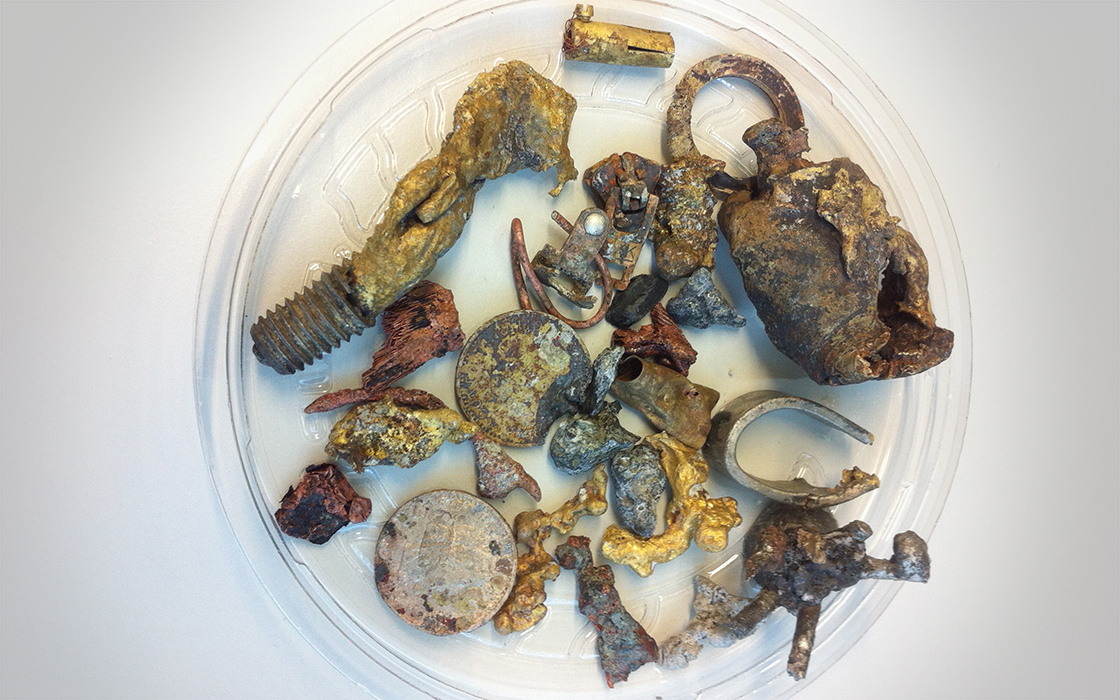Electrodynamic fragmentation of electronic scrap
Electronic devices are becoming increasingly complex and compact. This complicates the recycling process – which is why there are plans to introduce new and innovative processes.
Objectives
Development of an innovative separation method for recycling electronic scrap.
Background
Electronic devices are becoming increasingly complex and compact. As a result, electronic scrap contains a multitude of different components and recyclable materials. Electrical components (printed circuit boards, batteries, displays etc.) are often installed in a plastic enclosure. The aim of a selective separation method is to make the recycling process easier.
Result
In the case of electrodynamic fragmentation (EDF), the material to be separated is immersed in water and positioned between two electrodes; the water acts as an isolator. Applied high voltage (up to 200 kV) is discharged and generates disruptive discharges. In the process, a compression wave (high pressure) and a plasma channel (high temperature) occur. The discharges take place along the edges of the material, whereby the material can be selectively separated.
A test is carried out to determine whether the wet processing of electronic scrap by means of EDF is suitable for identifying desirable recyclable materials in a targeted way. The objective is for recyclable materials to accumulate so that it is easier to recover them. A very wide range of analytical methods are used to verify the effectiveness of EDF for certain types of material.
Project information
Implementation partner | |
Implementation | FHNW Institute of Bioenergy and Resource Efficiency, FHNW Centre for Resource Efficiency |
Research partner | |
Duration | three years |
Funding | |
Project team | Prof. Dr. Martin Streicher-Porte, Thomas Keller |

